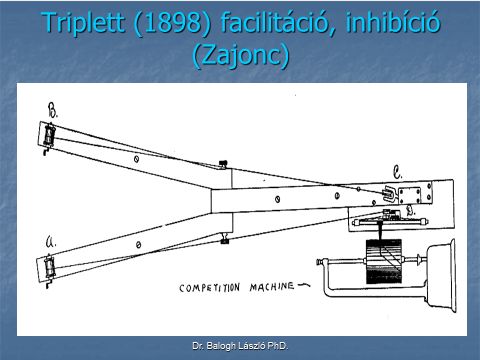The first sport-psychological experiment
The first experiment of social-psychology can be considered the first research within the area of sports-psychology whose outcomes and results could be applied in practice.
Norman Triplett had several interesting experiments in 1898. He was not only a researcher but also an amateur sportsman. In competitions he observed that when biking together with his rivals he achieved better results. Being a scientist he tried to arrive at some conclusion. He carried out the following experiments. The participants were asked to wrap the fishing line on a fishing reel as quickly as they could, first on their own, then in the presence of others (see figure 2.).

Figure 2. Triplett’s theory proving social facilitation.
In another experiment the participants had to ride the “bike-ergo meter” on their own, then they did the same in the presence of others. He concluded that we outperform when others are also present. He called this phenomenon social facilitation. Later Zajonc (1965) proved that the presence of others not only facilitates performance but also inhibits it. He called it social inhibition. In his opinion this difference could be detected because somebody’s presence raises his/her arousal level, and it increases the performance in case of simple, well practiced exercises, but it degrades the performance while doing complicated tasks. Watch the film about Triplett: